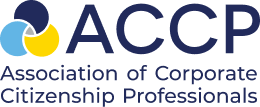Supporting Artists and Our Creativity Community During COVID-19
Sabrina Thornton – Program Officer, Arts and Culture
T. Rowe Price Foundation
.png)
In mid-March 2020, the T. Rowe Price Foundation was asking the same questions as many other funders around the globe: How can we have the most immediate impact during the COVID-19 crisis? For us, after discussion with our corporate and city partners, the largest portion of our funding effort went to support food security in Baltimore – specifically, making sure Baltimore City Public School students and their families in our community’s most vulnerable neighborhoods have access to nourishing meals despite school closures. We are proud of this commitment and understand the importance of ensuring these types of basic needs are met during a crisis of this magnitude. In addition to our initial grant, The T. Rowe Price Foundation also announced our commitment to the Baltimore Emergency Artist Relief Fund. While this may seem far removed from “basic needs,” for us it was an obvious decision.
The T. Rowe Price Foundation is one of few funders in Baltimore with a dedicated arts and culture grants budget. We are consistently blown away by the brilliance and resilience of the arts community that lives and thrives in Charm City and contributes to its creative economy. In a city with its fair share of challenges, the arts community is and always has been a bright spot and a beacon – a true testament to the spirit of Baltimore and its people. We are humbled by the partnerships we’ve been able to form with the arts community, and we hold our commitments to a high standard.
Having spent my past life as a fundraiser for arts organizations large and small, I can anticipate a little bit what lies ahead, now that our economy is feeling the impact of the coronavirus pandemic. My first full-time grant-writing job was at Cornerstone Theater Company in 2009 – just as the downturn was starting to ripple (more like tidal wave) through the funding landscape. Artists and arts organizations have an incredibly hard time making their case for support when unemployment is high, families are suffering, and basic needs are at the forefront of everyone’s mind. And while one can try to make the solid “economic impact of a thriving cultural community” argument until they are blue in the face – it often falls on deaf ears.
Moreover, artists and creatives are feeling the impact of this crisis in unique ways. I attended a listening session with the arts and culture leaders responsible for creating the Baltimore Emergency Artist Relief Fund, where we discussed the following:
- Artists rely heavily on events for their artistic income.
- Artists often supplement their arts income with work in the service industry.
- Events and service industry jobs have taken massive hits during the crisis.
- Independent artists and creative entrepreneurs are unlikely to qualify for federal and state stimulus support due to tax filings, income thresholds, and other extenuating circumstances.
Being a Baltimore arts funder, this choice felt obvious to us in ways it might not be to other corporate philanthropies. But I would challenge funders with a strong connection to a geographic place to look beyond the concept of “basic needs” – and take a moment to remain attuned to those assets often overlooked in times of crisis. What makes your community thrive? What are the bright spots? Where are the points of pride? When it feels like the world is going dark, we should do what we can to keep those lights shining strong.
To read about T. Rowe Price’s coronavirus relief efforts, click here.
ACCP is hosting a webcast July 22 with leaders from the T. Rowe Price Foundation and Maryland Citizens for the Arts to further discuss the ways arts and culture organizations and artists are uniquely affected by the COVID-19 crisis, and how corporate philanthropy can better support creative communities now and in the future. To register, please visit our website.
